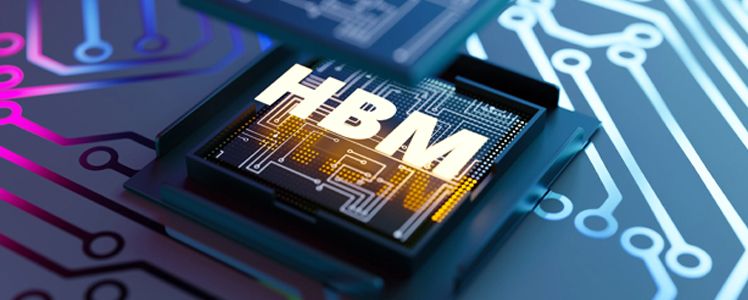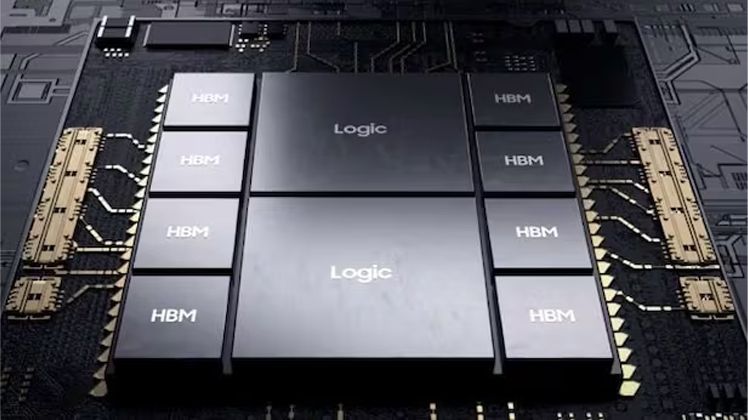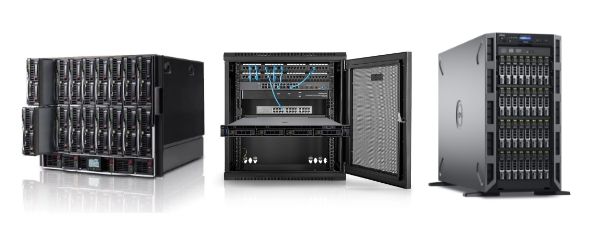HBM, or High Bandwidth Memory, is a technology that in recent years has become an indispensable component of hardware used in AI, HPC, and data centers. This isn't just another version of memory—it's a completely new architecture that allows accelerators to run faster, more smoothly, and more energy-efficiently. In this post, you'll see why artificial intelligence engineers love HBM, what its development looks like, how much it really costs—and why, despite these costs, no one is looking back at classic DRAMs anymore.


HBM Is Not Just a New Type of Memory - It's an AI Architecture Like Never Before
Let's start with the basics. High Bandwidth Memory (HBM) is a DRAM technology designed for maximum throughput and minimal power consumption, used mainly in graphics cards and AI accelerators. Unlike classic DDR or GDDR modules, HBM is based on a vertical stacking of DRAM chips connected using TSVs (Through-Silicon Vias) and integrated with the processor using silicon interposers. This isn't just a new type of chip - it's a completely new way of thinking about memory access.
In practice, this architecture means one thing: significantly shorter signal paths, higher packing density, and an unprecedented data bus width. A single HBM stack can have a bus as wide as 1024 bits, whereas GDDR typically operates on 32 bits. HBM3E, introduced in 2023, achieves up to 1229 GB/s of throughput with 48 GB of capacity per stack, which already allows GPUs to handle huge datasets without clogging the buffers.
And that's just the beginning - HBM4 (planned for 2026) is expected to reach 1.6 TB/s with 64 GB of capacity. In the context of AI or HPC infrastructure, this is a game-changer that enables scaling workloads without shifting bottlenecks to the RAM level.


Why HBM Wins Against DDR and GDDR: Throughput, Latency, and Power Consumption Leave No Doubt
Traditional DRAM - whether we're talking about DDR5, GDDR6, or LPDDR—simply can't keep up with the throughput required by modern AI chips. HBM not only offers a much wider interface but also does so at a lower voltage and with less power consumption. In specific numbers: HBM consumes 3.5 to 4.5 times less energy in the PHY layer than GDDR6 for the same throughput. This means not only energy savings but also lower thermal requirements and greater cooling efficiency - crucial for operation in server rooms or data centers.
The differences in throughput are just as significant. GDDR6 tops out at around 600 GB/s, while HBM3E can achieve up to 1.2 TB/s. In turn, data access latencies are lower not only thanks to the physical proximity of the chips but also due to the elimination of some delays resulting from the classic motherboard layout. As a result, an AI model can not only learn faster but also infer faster - and without downtime from waiting for RAM access. That's why if your infrastructure uses intensive computational workloads, switching to HBM isn't an option - it's a prerequisite for stable growth.
AI Loves HBM Because It Has No Choice - Traditional DRAM Can't Keep Up with the Models
It's not just that HBM is faster. It's that today's artificial intelligence models leave no other choice. When you're dealing with hundreds of billions of parameters, tens of thousands of tokens, and daily data inputs measured in petabytes, every microsecond of memory access becomes a bottleneck. Traditional DRAM - even in its DDR5 version - cannot provide the same throughput and density as HBM. As a result, the machine waits. And it's not waiting for the GPU, but for the RAM.
High Bandwidth Memory was created precisely to eliminate this problem. GPUs and AI accelerators like the NVIDIA H100, AMD MI300, or Intel Gaudi 3 have such an enormous demand for bandwidth that their potential would be wasted without HBM. As Jim Handy of Objective Analysis said, without HBM, you'd need several processors instead of one, which still wouldn't produce a similar effect. HBM simplifies the system architecture, reduces the number of components, and at the same time, scales linearly with the growing demands of AI models. Thanks to this, you don't have to expand the entire platform - you just need to use a better memory interface.
How Much Does HBM Cost and Why Is It Worth Every Penny Anyway?
The high price of HBM is no secret - and it can indeed be surprising. One gigabyte of HBM costs about $10.6, while DRAM costs around $2.9, and DDR5 even less. But with HBM, you're not paying for capacity. You're paying for throughput, energy efficiency, and the absence of bottlenecks, which in AI systems translate directly into model training time, and thus into operational costs. According to cost analyses, an NVIDIA H100 GPU costs about $3,000, with half of the price being the HBM memory supplied by SK Hynix.
Despite this price, the operating margin for manufacturers reaches as high as 87% - which means that corporate clients are willing to pay because they gain predictability and performance. It simply adds up. You train the model faster, the system uses less energy, and more effective load management allows you to better utilize hardware resources. And even if you pay more at the start, the real ROI (return on investment) on an annual basis turns out to be more favorable than with cheap systems using classic DRAM. Especially if you're building infrastructure for years, not for a quarter.
Custom HBM Is the Future - Full Control Over Throughput and Consumption
Standard HBM is already a powerful tool, but more and more companies are going a step further. Custom HBM (cHBM) allows for designing memory tailored to specific tasks—such as AI inference, 3D graphics, or quantum simulations. Thanks to the 2.5D architecture, silicon interposers, and proprietary communication channels, companies like Marvell are creating dedicated cHBM chips that exceed the limitations of classic interfaces. In practice, this means greater data density, a better power-to-performance ratio, and better control over the system topology.
This is no longer just memory - it's part of the entire platform design. You can decide how many channels you use, how you distribute data, and what latencies you accept. In a world where performance differences are measured not in percentages but in training times, this flexibility provides a real advantage. According to Samsung, the share of custom HBM is expected to exceed 50% in the coming years because more and more companies need to precisely match hardware to their workload. And contrary to appearances, this isn't an option just for giants - it's enough that you operate in a niche where the standard configuration limits you.
Watch Out for Availability - HBM Could Run Out Faster Than You Can Plan Your Project
Currently, there are only three HBM suppliers on the market: SK Hynix, Samsung, and Micron, and production capabilities are limited by 2.5D packaging technology and demanding testing processes. TSMC has a dominant position in this segment, but they too are signaling capacity constraints in their factories. Today, HBM prices are already rising by 5–10% quarterly, and market reports suggest that availability will be a strategic problem for the next two years.
So, if you're thinking about implementing an AI infrastructure soon, consider HBM availability as a key planning parameter. It's not just about how many units you need, but when you need to contract for them, with whom to negotiate supplies, and how to manage inventory. Many companies are already signing multi-year agreements with suppliers to secure the continuity of their supply chain. If memory is treated as the last "to be selected" item in your project schedule, you risk not being able to buy it before everything goes into production. And then, even the best GPU won't make a difference.

































